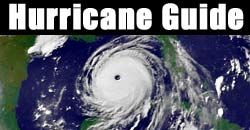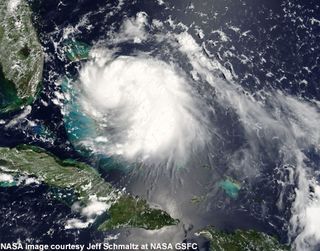The Texas Traffic Nightmare: No Simple Solution

Updated 9:50 a.m. ET Friday, Sept. 23
As Hurricane Rita headed toward the Gulf Coast, hundreds of thousands of Texans clogged interstate highways heading away from the coast. Studies show there is no simple solution to the problem.
Thursday, in reponse to the massive congestion, the Texas Department of Transportation (TxDOT) initiated contra-flow traffic, in which outbound traffic is allowed to use inbound lanes to maximize a road's capacity, on some roads. Contra-flow was used on I-45 between Houston and Dallas and on I-10 between Houston and San Antonio. But backups continued.
Early Friday, several elderly evacuees were killed when their bus caught fire on a gridlocked I-45 near Dallas, adding to the congestion.
Contra-flow is not a cure-all. Research shows that accident rates rise and emergency personel have a harder time getting into the area being evacuated.
Florida has never used contra-flow, an official there told LiveScience.
The good and bad
Sign up for the Live Science daily newsletter now
Get the world’s most fascinating discoveries delivered straight to your inbox.
Contra-flow evacuation was first used in 1999 in Georgia during Hurricane Floyd with mixed, but overall positive, results.
A 2001 Louisiana State University Hurricane Center study reported that full traffic reversal could result in a 70 percent increase in capacity on conventional two-outbound-lane configurations. Even if only one lane were reversed, there could still be a 30 percent increase in capacity.
But the report's authors also said: "While contra-flow is widely viewed as the best way to increase outbound flow during evacuations, it is not a cure all."
While halfway reversals still allow a way for motorists to go against the flow, head-on collisions are more likely. But the troubles with full reversal could be even worse.
By converting the inbound lanes for outbound use, it makes it harder for rescue vehicles to break their way through traffic, either for a breakdown or accident – fender benders are common in these stressful situations – or to deliver aid.
Other problems
"Evacuations are not always a very efficient process since so many people are trying to get out of the area at the same time," says Paul Clark, an evacuation expert with the Florida Department of Transportation.
The main problem with evacuations, of course, is that roads have a limit to how many cars they can handle at a time. During evacuations, this limit is exceeded and traffic grinds to a gridlocked halt.
But there are subtle effects that make it all worse.
People entering and exiting the stream of evacuees on major highways contributes to the problem, causing mini-traffic jams at each on or off ramp. Congestion at the end of the road is also a problem, and traffic enforcement tries to divert as much traffic to smaller local roads as possible to reduce backups.
Another problem is that evacuees tend to overpack.
"A family has a car, a motor-home, and a boat," Clark told LiveScience. "They want to take everything with them, so you have extra vehicles on the road, which contributes to the delay."
In Florida, rescue workers use the less congested inbound lanes to set up materials – such as ice, water, and food – and equipment – generators and repair tools – for the post-storm rescue and repair effort.
"If we put contra-flow in place, then we shut down that corridor very quickly," Clark said.
Lessons from Florida
Also, interchanges and ramps for inbound lanes aren't set up to accommodate outgoing traffic, so gridlock still occurs in these spots.
Although Florida has contra-flow plans ready, they have never been put into action, partly because citizens are encouraged to evacuate well before a storm arrives.
"Even though excessive congestion and bottlenecks make for slow moving, as longs as you have them moving at a reasonable speed, you don't have to use it," Clark said.
In the past few years, evacuations in Florida have gone relatively smoothly. This is largely because people are getting warnings earlier and avoiding the big rush. Better evacuation education also plays a part.
"We've tried to educate people over the years. If you're not in a high risk area, not in danger of flooding or intense winds, stay at home, hunker down, or go to a shelter," Clark said. "If you're going to evacuate, go 10 or 20 miles, not hundreds."
Last year Florida had four major hurricane evacuation events, and about 9.4 million people left their homes at various times. But thanks largely in part to the state's early action procedures, most of the roads were cleared well before the storms hit.
"People here have been making their decision earlier over the last few years," Clark said. "And, by the fourth event, people were tired of evacuating."
- Rita Could Stall and Dump 25 inches of Rain Inland
- New Computer Model Predicts Rita's Path and Intensity
- Hurricane Center May Run Out of Names
- Natural Disasters: Top 10 U.S. Threats
- 2005 Hurricane Guide

Deadliest, costliest, busiest months, worst states, plus this year's storm names and more.
The science of monster storms.

Katrina Gallery

Hurricane Gallery











